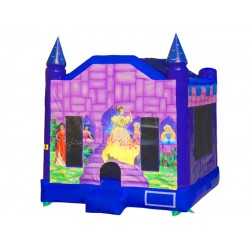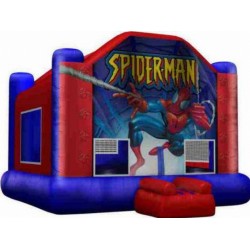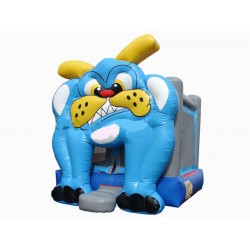Can Jumping Castles Be Used Indoors?

Jumping castles are a popular attraction for parties and events, often seen at outdoor gatherings. However, many people wonder if they can also be used indoors. The answer is yes, jumping castles can be used indoors, but there are several factors to consider to ensure a safe and enjoyable experience. Here's what you need to know:
1. Size and Space Requirements
The first consideration when using a jumping castle indoors is the amount of available space. Jumping castles come in various sizes, and it’s essential to choose one that fits comfortably within your indoor area:
- Measure the Space: Before renting or purchasing a jumping castle, measure the indoor space where it will be set up, including the ceiling height.
- Choose the Right Size: Select a jumping castle that is appropriate for the dimensions of the room. Ensure there is enough clearance around the castle for safe use.
- Consider Ceiling Height: Make sure the ceiling is high enough to accommodate the height of the jumping castle, including any structures or decorations on top.
2. Flooring and Surface Considerations
The type of flooring and the surface where the jumping castle will be placed is another important factor:
- Soft Flooring: If possible, set up the jumping castle on soft flooring, such as carpet or foam mats, to provide extra cushioning.
- Hard Floors: For hard floors, such as tile or wood, consider placing protective mats or padding underneath the jumping castle to prevent slipping and provide a softer landing.
- Check for Obstructions: Ensure the area is clear of furniture, sharp objects, and other obstacles that could pose a safety hazard.
3. Ventilation and Air Circulation
Proper ventilation is essential when using a jumping castle indoors, especially if it is set up in a smaller or enclosed space:
- Adequate Airflow: Make sure the room has adequate airflow to prevent the area from becoming too warm or stuffy. Open windows or use fans to improve air circulation.
- Blower Placement: The blower that inflates the jumping castle needs to be placed in a well-ventilated area to avoid overheating and to ensure it operates efficiently.
- Noise Consideration: Be aware that the blower can be noisy, so consider the acoustics of the room and how the noise might affect the indoor environment.
4. Safety Precautions
Safety should always be a top priority when using a jumping castle, whether indoors or outdoors:
- Supervision: Ensure that children are supervised at all times while using the jumping castle to prevent accidents and enforce rules.
- Limit Capacity: Stick to the recommended number of users at one time to avoid overcrowding and collisions.
- Emergency Access: Ensure that there is a clear path to exit the room in case of an emergency.
5. Advantages of Indoor Use
Using a jumping castle indoors offers several advantages, particularly when outdoor conditions are not ideal:
- Weather Protection: An indoor setup protects against weather-related issues, such as rain, wind, or extreme temperatures.
- Year-Round Use: Jumping castles can be enjoyed year-round, regardless of the season or weather conditions.
- Controlled Environment: An indoor environment allows for better control over lighting, temperature, and safety conditions.
Conclusion
Jumping castles can certainly be used indoors, provided that you take the necessary precautions and consider the space, surface, ventilation, and safety factors. With proper planning, an indoor jumping castle can be a fun and exciting addition to any event, offering a safe and controlled environment for children to enjoy, regardless of the weather outside.




Leave a Comment